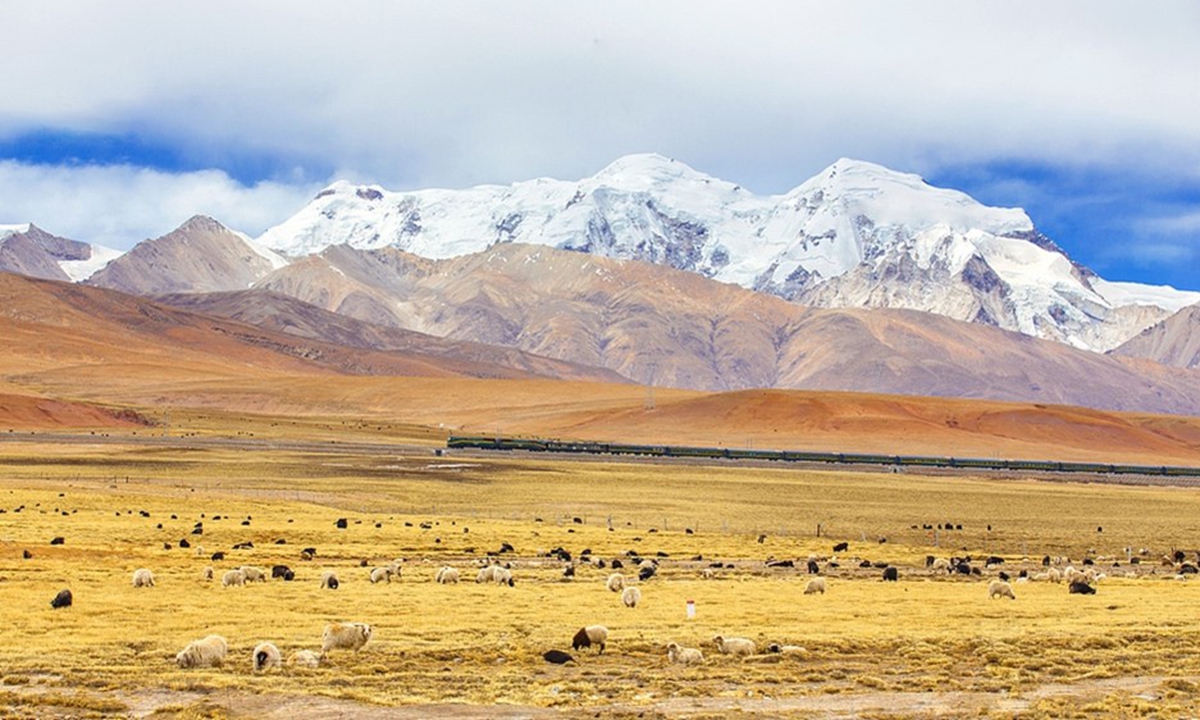Using an innovative data analysis method, a research team from the Institute of Vertebrate Paleontology and Paleoanthropology (IVPP) of the Chinese Academy of Sciences recently demonstrated that the intense uplift of the Qinghai-Tibet Plateau since the Neogene (approximately 23 million years ago) has made northern China and Central Asia a core region for mammalian evolution in the Northern Hemisphere.
Many animal groups that evolved here later dispersed to Europe, Africa and even North America, exerting a profound impact on the composition of modern global mammal faunas, the Global Times learned from the IVPP on Sunday.
The Qinghai-Tibet Plateau, with its massive size and continuous uplift — particularly reaching a height close to its modern elevation around 12 million years ago — acts like a huge barrier that blocks water vapor.
This has caused the northern China and Central Asia – including Mongolia and the Asian part of Russia – to have undergone aridification earlier and more severe than in other regions of the Northern Hemisphere.
Such unique environmental changes created conditions for the emergence of specialized mammal faunas adapted to arid and cold environments in this area, such as the well-known Zanda Fauna. These animals were later able to disperse to high-latitude regions during the Quaternary glaciations.
The conclusion was verified through analysis of huge amount of fossil data. Information on all large mammals — covering nine orders, more than 50 families and a total of 1,246 genera — in the Northern Hemisphere, namely Asia, Europe, Africa, and North America, was compiled. Based on this, a phylogenetic tree including all these genera was constructed; and the concept of “inter-species contribution rate” was proposed, which indicates closeness of different fauna on the evolution tree.
Between 20 million and 8 million years ago, the “closeness” between the mammal faunas of Central Asia and northern China and the modern global mammal fauna was significantly higher than that of the other four regions. This indicates that during this period, this region evolved a large number of new taxa, or categories of bio groups, which made important contributions to later generations, including modern mammals.
Analysts argued that the uplift of the plateau and corresponding climate and geographical changes gave rise to many animal taxa adapted to open environments. These taxa later dispersed to Eurasia, Africa and North America, ultimately laying the foundation for the geographical distribution pattern of modern terrestrial mammals.
It can be said that the evolutionary stories of animals we see today, such as wildebeests and antelopes on the African savannas, bisons in North America, and even domesticated goats and sheep, are deeply rooted in the changing land at the foot of the Qinghai-Tibet Plateau 10 million years ago.
The research was conducted by IVPP as well as American Museum of Natural History and Berlin Museum of Natural History; the results were published on the international journal Science Advances on Friday.




